How to Know if Your Coins Are Valuable. The value of a coin is based on its date & mintmark, its rarity, and its condition. Run an online search to identify what coin type you have, then contact a local coin dealer to assess your coin value.
1. What makes a coin valuable?
There are generally four characteristics that make coins more valuable than their currency or face value; these are metal content, collectability, condition, and rarity.
2. What is the role of condition in coin value?
The condition of a coin, often graded on a scale, is another crucial factor in determining its market value. Coins in better condition, with minimal wear and original luster, are generally valued higher. Demand for specific coins can fluctuate based on trends in the collector community and economic conditions.
3. How are coins graded for quality?
A coin’s grade is generally determined by six criteria: strike, preservation, luster, color, attractiveness, and occasionally the country/state in which it was minted. Several grading systems have been developed. Certification services professionally grade coins for tiered fees.
4. How do rare coins gain value?
Unlike securities, the value of collectibles typically isn’t tied to market trends. Instead, their worth is influenced by a range of different factors, including demand. With coin collecting, as with collecting other items, the more rare the coin, the more valuable it is.
5. What is the historical significance of ancient coins?
Coins can tell us about religion, politics, history, economics and cultural exchange, and even how the ancient world has continued to attract attention long after the fall of the societies that produced them.
6. Who first minted coins?
the Lydians
7. What materials were early coins made of?
Ancient coins were made from gold, silver, electrum, and copper and its alloys, bronze or brass. The earliest coins, minted in Asia Minor in the mid- to late seventh century B.C., were of naturally-occurring electrum, an alloy of gold and at least 20 per cent silver.
8. How did the Romans standardize their currency?
Starting in the late 4th century B.C., the Roman Republic based a bronze (aesin Latin) coinage upon the weight standard of the Roman pound, which was about 323 metric grams. The heavy base unit, the as, initially weighed one Roman pound, while fractional coins were minted at proportional weights.
9. Why are ancient gold coins highly valued?
These coins not only facilitated trade but also served as a powerful propaganda tool, reinforcing the authority and divine status of the emperor. Gold coins were highly valued for their durability, scarcity, and aesthetic appeal.
10. How does the silver content of a coin affect its value?
The price of a certified silver coin is tied to the coin’s weight in silver, but also to its availability and condition. Because a certified coin’s condition plays such a significant role in its market potential, certified coins are encapsulated and sealed in impact-resistant, tamper-proof slabs.
11. What is the difference between currency and commodity value?
The price of a commodity can fluctuate rather quickly, however, this depends on the liquidity of the market. The value of a currency is determined by interest rates which are, in turn determined by macroeconomic conditions.
12. How can you identify valuable silver coins?
Look for Hallmarks and Purity Stamps : Many silver coins, especially those made of sterling silver, will have hallmarks indicating their silver content. The most valuable silver coins are typically 90% or more pure silver. Research the Coin’s History: Sometimes, a coin’s backstory adds value.
13. What role did the Lydians play in coinage history?
In approximately 630 BCE, someone in the Anatolian kingdom of Lydia stamped a piece of precious metal with something akin to a signet ring. One outcome of this simple act was that it increased confidence in the lump’s weight and purity when later used in the marketplace.
14. What is the significance of the drachm in ancient Greek currency?
A small silver coin – a drachm was a man’s average daily wage. A large silver coin – a tetradrachm would buy luxuries such as jewellery, horses or weapons. It was worth four times a man’s daily wage. From about the eighth century B.C. the Greek world was characterized by the city-state.
15. How did the Indo-Greek kingdoms influence coinage?
Answer: Indo-Greek coins influenced subsequent Indian coinage by introducing the practice of minting coins with the ruler’s portrait, bilingual inscriptions, and the use of deities from different pantheons. This tradition was later adopted by other Indian dynasties, such as the Kushans and the Guptas.
16. What are some famous examples of valuable coins?
The 1794 Flowing Hair Silver Dollar. picture alliance/Getty Images. … The 1787 Brasher Doubloon. … The 1787 Fugio cent. … The 723 Umayyad Gold Dinar. … The 1343 Edward III Florin. … The 1943 Lincoln Head Copper Penny. … The 2007 $1 Million Canadian Gold Maple Leaf. … 1913 Liberty Head V Nickel.
17. How can you determine if a coin is collectible?
They are no longer being produced and therefore decreasing in circulation. They are difficult to find. They have unique marks due to errors or limited editions. They have some kind of historical significance.








